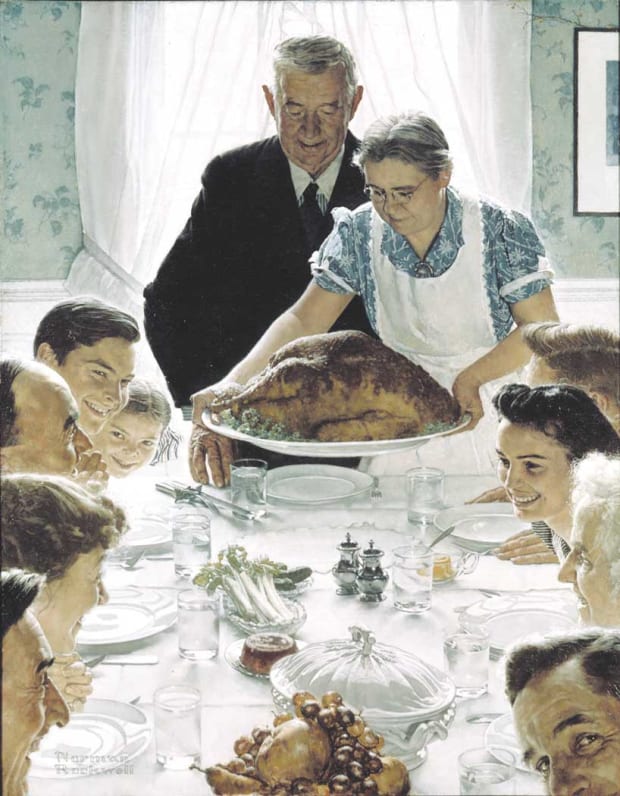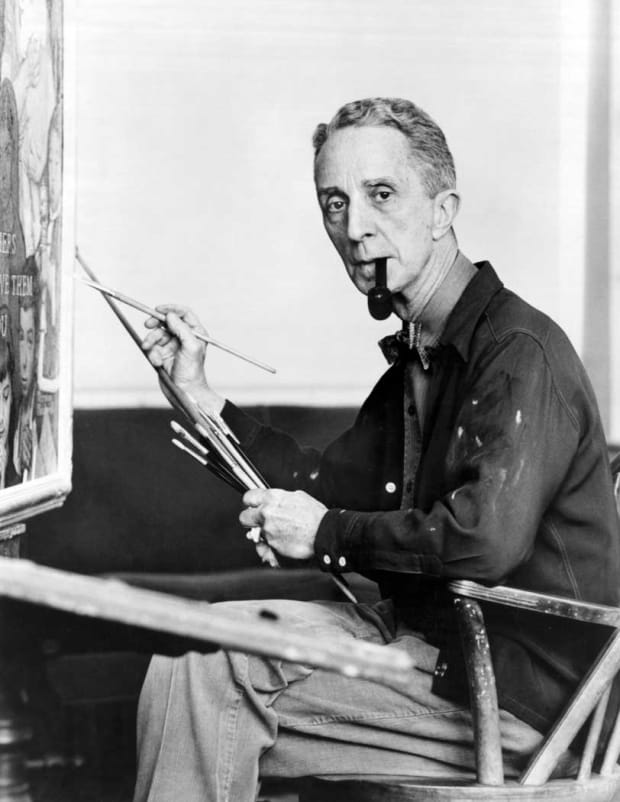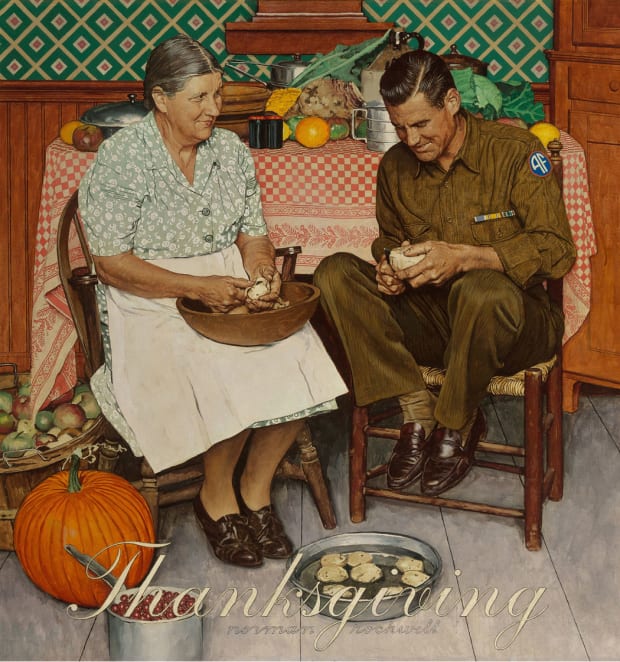Throughout his brilliant career, Norman Rockwell illustrated 323 covers of The Saturday Evening Post during a nearly five-decade relationship with the magazine. With its traditional Thanksgiving setting, “Freedom from Want” is one of Rockwell’s best known illustrations, but it didn’t appear on the magazine’s cover and it wasn’t about the holiday. Rather, the work was about something much larger.

Courtesy Norman Rockwell Museum Collection
The story of Rockwells masterpiece begins Jan. 6, 1941, when President Franklin D. Roosevelt presented his eighth State of the Union address to Congress. FDR’s speech was intended to rally U.S. support for British and Allied troops in World War II.
“In the future days, which we seek to make secure, we look forward to a world founded upon four essential human freedoms,” Roosevelt said of his postwar world vision. The four freedoms Roosevelt outlined that night: freedom of speech, freedom of worship, freedom from want and freedom from fear.
In an age of isolationism, Roosevelt’s speech fell flat. Congress barely applauded. The next day’s newspapers didn’t mention the four freedoms. It wasn’t until Rockwell picked up his paintbrushes that Roosevelt’s words took flight.
Rockwell, who was emerging as the artist-of-the-people thanks to his cover work at The Saturday Evening Post, captured America’s imagination in a way that Roosevelt’s words never could. It took Rockwell seven months to paint his “Four Freedoms” illustrations – a Lincolnesque working man standing up and speaking at a town meeting; a cluster of profiles of people in prayer; a mother and father watching over two sleeping children; and a family gathered around the Thanksgiving table.

Courtesy Norman Rockwell Museum
Rockwell’s “Four Freedoms” were published inside four consecutive issues of the Post, starting on Feb. 20, 1943, accompanied by essays by four distinguished writers — Booth Tarkington, Will Durant, Carlos Bulosan, and Stephen Vincent Benet. The paintings were a phenomenal success, with the Post receiving 25,000 reprint requests.
In May 1943, representatives from the Post and the U.S. Department of the Treasury announced a joint campaign to sell war bonds and stamps. They would send the “Four Freedoms” paintings along with 1,000 original cartoons and paintings by other illustrators and original manuscripts from The Saturday Evening Post on a national tour.

Courtesy Getty Images
Traveling to 16 cities, the exhibition attracted more than a million people who purchased $133 million in war bonds and stamps. Bonds were sold in denominations of $25, $100, and $1,000, and each person who purchased one received a set of prints of the four paintings. In addition, the Office of War Information printed four million sets of posters of the paintings. Each was printed with the words “Buy War Bonds.” They were distributed in U.S. schools and institutions and overseas.
Through the years, Rockwell’s “Freedom from Want” image has been heralded as one of his most recognizable paintings, and one of the most popular Thanksgiving images, even though the work was about much more than the holiday.
You may also like Celebrating Norman Rockwell’s ‘Four Freedoms’
Of course, Rockwell did create art specifically for Thanksgiving. One of his most memorable pieces, “Home for Thanksgiving,” first appeared on the cover of The Post on Nov. 24, 1945. It too started out much different than where it ended up.

Image courtesy Heritage Auctions
“Rockwell’s initial intention for the Thanksgiving cover of 1945 consisted of a large group of prayerful people giving thanks,” according to the Norman Rockwell Museum website. “With the end of war already in sight, art editor Ken Stuart advised Rockwell to work on a picture of a returned soldier. The gist of Rockwell’s picture is that the soldier is glad to do at home what he hated doing in the Army.”
The mother and son in the painting were, in fact, mother and son: Sarah Hagelberg and her boy, Richard, owner of a dairy farm in Arlington. Not only was Richard a WWII veteran, but he also served as Rockwell’s milkman. The original illustration sold for $4.3 million at Heritage Auctions.
You may also like The Art of Norman Rockwell Gives Us Pause









